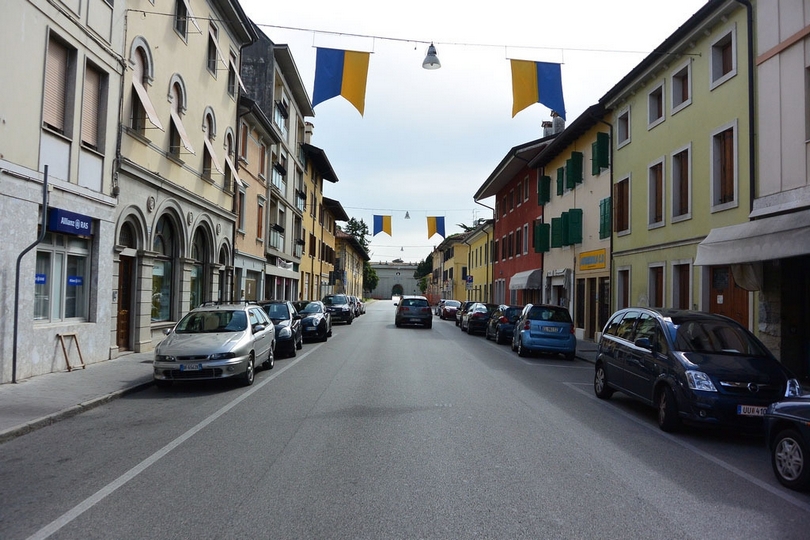Palmanova is a star fort walled city with a population of about 5,400, located in the northeast of the country, about 25 km south of Udine, was founded at the end of the 16th century, with the direct support of the government of the Venetian Republic. Palmanova was to become a model fortified city.
Palmanova Italy
The shape of the nine-cornered star was formed so that any of the nine "corners" could receive support and help from the adjacent "corner" in the event of an attack. The city could be entered through one of three gates. Inside, the city consists of three “level rings”. The famous Italian architect Vincenzo Scamozzi was the author of the project of the fortified city.
Palmanova fortress is shaped like a nine pointed star
On October 7, 1593, the foundation stone was laid for a new fortress, nicknamed the "Star City" due to its nine-pointed star shape. Palmanova was conceived mainly as a defensive structure to strengthen the borders and prevent the invasion of the Turks: the number of bastions and the length of the sides of the fortress was calculated taking into account the range of the guns of that time.
During the Venetian rule, the fortress was equipped with two rings of fortifications with curtains, earthen ramparts, moats, and ravelins, which protected three approaches to the city - from Udine, Cividale and Aquileia.
In 1797 the Austrian army entered the fortress by deception. But the Austrians did not have time to enjoy the victory, as the French took possession of the fortress. After the signing of the Campo-Formian peace treaty, Palmanova again went to the Austrians, who held for several years. In 1805, the French entered the fortress, and during this period the third circle of fortifications appeared. In 1814 the star city returned to the Habsburgs again.
During the Austrian rule (1815-1866), the Public Theater was built, which became the main disseminator of the ideas of the Risorgimento. In 1848, the townspeople, led by General Carlo Zucchi, revolted against the Austrians. In 1866 Palmanova joined the Kingdom of Italy.
During the First World War, the fortress became the center for the distribution and supply of the army. After the Battle of Caporetto, the city was set on fire by the retreating Italian army. By decree of the President of the Italian Republic in 1960, Palmanova was declared a National Monument and included in UNESCO's World Heritage Site list as part of Venetian Works of Defence between 15th and 17th centuries
Palmanova star-shaped fortress city of Italy
















No comments:
Post a Comment